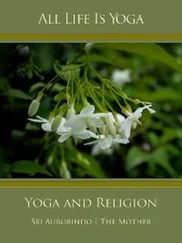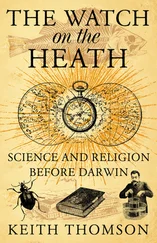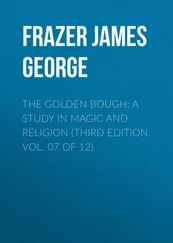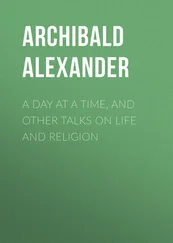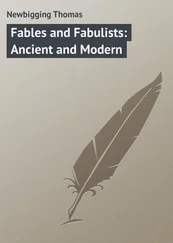Vikernes, Varg - Varg Vikernes - Sorcery and Religion in Ancient Scandinavia
Здесь есть возможность читать онлайн «Vikernes, Varg - Varg Vikernes - Sorcery and Religion in Ancient Scandinavia» весь текст электронной книги совершенно бесплатно (целиком полную версию без сокращений). В некоторых случаях можно слушать аудио, скачать через торрент в формате fb2 и присутствует краткое содержание. Жанр: Старинная литература, на английском языке. Описание произведения, (предисловие) а так же отзывы посетителей доступны на портале библиотеки ЛибКат.
- Название:Varg Vikernes - Sorcery and Religion in Ancient Scandinavia
- Автор:
- Жанр:
- Год:неизвестен
- ISBN:нет данных
- Рейтинг книги:3 / 5. Голосов: 1
-
Избранное:Добавить в избранное
- Отзывы:
-
Ваша оценка:
- 60
- 1
- 2
- 3
- 4
- 5
Varg Vikernes - Sorcery and Religion in Ancient Scandinavia: краткое содержание, описание и аннотация
Предлагаем к чтению аннотацию, описание, краткое содержание или предисловие (зависит от того, что написал сам автор книги «Varg Vikernes - Sorcery and Religion in Ancient Scandinavia»). Если вы не нашли необходимую информацию о книге — напишите в комментариях, мы постараемся отыскать её.
Varg Vikernes - Sorcery and Religion in Ancient Scandinavia — читать онлайн бесплатно полную книгу (весь текст) целиком
Ниже представлен текст книги, разбитый по страницам. Система сохранения места последней прочитанной страницы, позволяет с удобством читать онлайн бесплатно книгу «Varg Vikernes - Sorcery and Religion in Ancient Scandinavia», без необходимости каждый раз заново искать на чём Вы остановились. Поставьте закладку, и сможете в любой момент перейти на страницу, на которой закончили чтение.
Интервал:
Закладка:
3. Þursaz means "thirsty" and "noise" and is connected to Bölþorn, the giant worm we best know as Jörmungandr ("animated cattle", "the mighty stick", "animated staff"). The dead went to Hel in silence, but the sorcerers and later gods made a lot of noise. To unlock the grave they needed the mistletoe; this was what they needed to make the guardian of the bridge of Hel believe they were Óðinn escorting a dead (Baldr) to Hel. The rune is a picture of a thorn, and represents hidden, negative powers, hostility and a portal to or a transition to this.
4. Ansuz means “spirit” and is connected to Óðinn (“spirit”) and Sága (“story”). The gods disguised themselves as Óðinn to get access to Hel, and wounded themselves with the point of a spear to make it look as if they were bleeding. In Hel they learnt the secret stories, the songs and spells from the spirit/goddess of death. The rune is a picture of the point of a spear, of the type made from bone and used for fishing in the Stone Age. It represents signals, messages from the deities, gifts and divine knowledge.
5. Raiþo means "thunder" and "ride" and is connected to Þórr ("thunder") and Loki ("lightning"). The kings went on a hunt for the spirits of winter, who had killed Baldr and abducted Nanna. The rune is a picture of the lightning that strikes from Heaven to Earth before thunder. It represents a journey, a ride, the ride of the mind after death and a rider.
6. Kauna means "mound", and is connected to Svartr ("black"). The dead returned in the Yule tide, from the pitch black burial mound, when the Sun lit up the innermost chamber as it rose on the Winter Solstice morning. The kings had to fight the shadows of Hel in the forest, armed with burning torches, bonfires and sparks. The rune is a picture of a light entering a dark chamber through a tiny opening. It represents light and enlightenment, guarded by the darkness around them.
7. Gebo means "gift" and is connected to Heimdallr ("world tree"). Inside the burial mound they found the weapons, tools and other valuables that had been placed in the grave along with the dead. They brought these items back out for the reborn dead to enjoy – again – when they were given to them on the Yule night. The rune is a picture of two pairs of wings, symbolizing time. When one pair rests the other pair takes over, so time never stands still. It represents gifts, spiritual gifts, talents, sharing, offers, reward and loyalty.
8. Wina means "joy" and "beauty" and is connected to the Vanir ("beautiful"), the winners of the beauty contests, and Fjörgyn ("mountain"). After the Yule time the winter spirits were weak and nature regained its strength and beauty. The rune is a picture of a beautiful woman. It represents absence of suffering, balance and harmony.
3.3 Hagall's Group of eight
9. Hagalaz means "hail" and "transition" and is connected to Ægir ("awe"), who is also known as Gymir ("sea"). When Baldr dies the world is covered in snow (water) and is changed. The rune is a picture of a hail storm in the autumn. It represents hail, pebbles, dissolution, harmful forces of nature, and the transition from one world to another.
10. Nauþi means "need" and is connected to the Norns; Urð ("past", "honour"), Verðandi ("presence", "the coming") and Skuld ("future", "guilt"). Need followed in the wake of the autumnal darkness and winter cold. The rune is a picture of a man with a rope tied around his waist, being a symbol of slavery and the destiny limiting our freedom. It represents the limitations of man, need, slavery, causes to suffering, lessons, hardship and necessities.
11. Isaz means "ice" and is connected to Hel ("hidden", "death"). The flood (rain and snowfall) came every year and covered the world. It took Baldr and his wife to Hel. The gods went into the mound and met her there. The rune is a picture of an icicle. It represents ice, cold and lack of movement.
12. Jera means "year" and is connected to Freyja ("spare", "free", "love"), also known as Frigg ("spare", "free", "love"). Inside the burial mound they met a spirit/goddess who freed them from death and gave birth to them again, as they stepped out from her womb (the burial mound). The rune is a picture of a man and a woman lying next to each other in the burial mound. It represents the fruitful year, spring and autumn, and marriage.
13. Íwaz means "yew", "archer" and "bow" and is connected to Skaði ("jump”, “climb”) and Höðr ("hood"). The rune is a picture of a waxing and waning Moon. It represents defence, yew, bows made from yew and the hunt for predators the nine first days of the year.
14. Perþi means "journey" and is connected to Váli ("chosen", "fallen") and Sleipnir ("glider", "flower"), known from the Greek mythology as the Trojan horse. This was the disguise of the combatant, when he annually participated in the Ragnarök battle in the forest. The rune is a picture of a horse in vertical flight. It represents a journey to the world of the spirits/gods, an expedition, an initiation, secrets and a journey to find answers to secrets.
15. Algiz means "elk" and is connected to Víðarr ("forest"). The battle of Ragnarök took place in the forest, and ended when the sorcerer/the god Víðarr symbolically killed the berserks, by tearing the furs from them and trampling on them. The rune is a picture of flames reaching for the sky from a burning tree trunk, or the head of an elk. It represents birth and life, health, physical health and strength.
16. Sowili means "shining" and is connected to Sol ("shining", "Sun"), alias Sunna ("brilliant", "bright", "Sun"). The Sun was saved in Ragnarök. The rune is a picture of the flames from a fire. It represents perfection, the Sun, the Sun rays and mysterious eloquence, creativity, eyes, stars and feminine charm.
3.4 Týr's Group of eight
17. Tíwaz means "beam" and is connected to Týr. To get the Sun's power and summer back they believed they had to first fight the winter spirits, and a week after Winter Solstice, on Ragnarök, they charged. They killed them or chased them back underground and enabled the Sun's power and summer to return. The rune is a picture of a (Yule) tree or a ray of light shaped like an arrow. It represents victory in battle, war and a spirit or god of war, a guiding planet or star and a strong beam that blesses man on Earth.
18. Berko means "birch", originally "shining white" or "bright white", and is connected to Jörð ("Earth"). When the men had hunted down the winter spirits Earth began to regain her strength. The rune is a picture of a woman's breasts. It represents growth, birch, rebirth, new life and fertility.
19. Ewaz means "horse" and is connected to Máni ("measure", "Moon"). Hel sent a message to the living, in form of a horse telling them that Baldr and his wife would be allowed to return. The rune is a picture of a horse riding across the sky. It represents movement, pace, horses, progress, loyalty and the heavenly bodies' journey across the firmament.
20. Mannz means "man", originally "thinking", and is connected to Bórr ("equip", "initiate"). Men started a new life after winter, and picked up where they had left the previous year. The rune is a picture of a man and a woman kissing each other, sharing spirit (breath). It represents humanity, its spirit and ability to think and remember, human nature and knowledge about man.
21. Laguz means "water" and "running water" and is connected to Njörðr ("favourable", "positive force from below"). The sea was no longer covered with ice, or too dangerous to travel, and it could provide man with wealth again. The rune is a picture of a waterfall. It represents streams, lakes, oceans, lakes and rivers, and their fertility.
Читать дальшеИнтервал:
Закладка:
Похожие книги на «Varg Vikernes - Sorcery and Religion in Ancient Scandinavia»
Представляем Вашему вниманию похожие книги на «Varg Vikernes - Sorcery and Religion in Ancient Scandinavia» списком для выбора. Мы отобрали схожую по названию и смыслу литературу в надежде предоставить читателям больше вариантов отыскать новые, интересные, ещё непрочитанные произведения.
Обсуждение, отзывы о книге «Varg Vikernes - Sorcery and Religion in Ancient Scandinavia» и просто собственные мнения читателей. Оставьте ваши комментарии, напишите, что Вы думаете о произведении, его смысле или главных героях. Укажите что конкретно понравилось, а что нет, и почему Вы так считаете.

